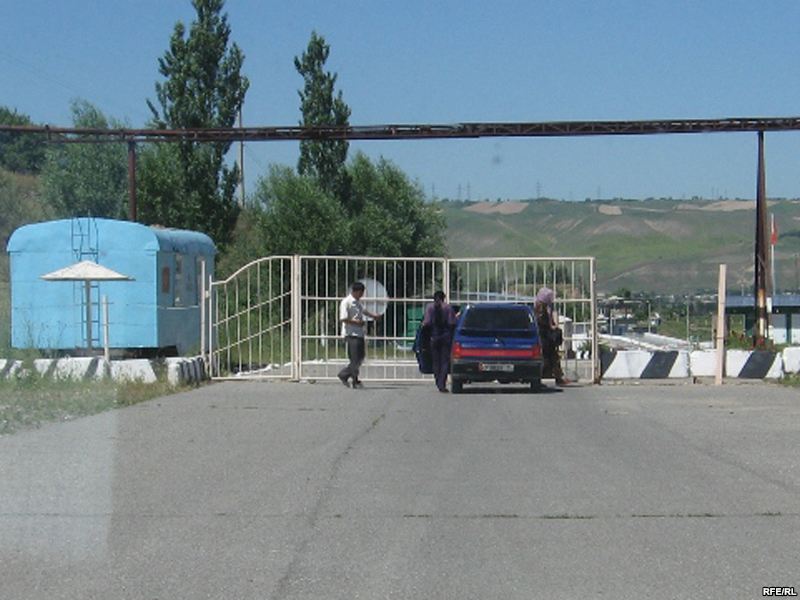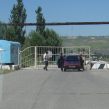
“Closed” Kyrgyz-Uzbek Border: A Recipe for Clashes
Publication: Eurasia Daily Monitor Volume: 8 Issue: 156
By:

On August 2, 2011 Uzbekistan closed the Divayram border crossing, located in Sokh enclave inside Kyrgyzstan. An important road artery for Kyrgyzstan’s Batken region passes through this enclave. Now, Kyrgyz are forced to bypass the enclave, adding 30 minutes or 40 kilometers to their journey, according to Azattyk (Kyrgyz Bureau of RFE/RL, August 8). In retaliation, Kyrgyz villagers around the enclave blocked the roads so that citizens of Uzbekistan could not leave. The situation was soon defused by Kyrgyzstan’s border guards who dismantled the roadblocks. This incident was just the latest in a series of escalations occurring as a result of unpredictable border closures inflicted by Uzbekistan over the past 20 years.
Border closures reached their climax on April 8, 2010, the day after the toppling of President Kurmanbek Bakiyev’s regime, when Uzbekistan unilaterally closed its border with Kyrgyzstan. Although the border remains technically closed, minor segments were open until recently, such as the Divayram border crossing. Now, Uzbekistan is even sealing these few remaining crossing points.
In response to closing official border crossings people are forced to find unofficial routes across the border. On July 29, an 11 year-old Kyrgyz girl drowned in a river that flows from Kyrgyzstan to Uzbekistan. According to the Kyrgyz Ministry of Emergency Situations, the girl’s relatives are unable to search for her body in Uzbekistan because of the border closure. The relatives have no choice but to bribe border guards in order to continue the search. The most frequent source of bribes in border areas is from traders. They are compelled to bribe border guards in order to unofficially resolve the problem. According to recent research by the Central Asian Free Market Institute, the rates for such bribery vary depending on the passage mode (i.e. holes in a barbed wire, a trench, a rope across the river, self-made bridges). The average bribe to border guards to allow a person to cross the frontier is around $6 (Kyrgyz and Uzbek sides). In addition to corrupt border guards who are benefiting from the border closure, crime bosses also flourish by offering their “protection” services. Thus, as illicit trade blooms, organized crime expands.
Attempts by Uzbekistan to close its border with Kyrgyzstan have unequivocally failed. Goods and people make it across the border regardless of these measures. The difference is that corrupt border guards and crime bosses receive their cut, while goods that cross the border are now more expensive in the bazaars and shops in both Uzbekistan and Kyrgyzstan. The burden of the losses is carried by consumers who have to pay for the extra overheads.
Border closure is particularly harmful in a time of rampant unemployment. Cross-border trade brings essential income especially when jobs are scarce and salaries low. The only alternatives in rural areas are teaching or driving taxis. According to the World Bank’s research, the Kara-Suu bazaar alone employs 16,000 people directly (selling goods) and 70,000 indirectly (i.e. drivers, food vendors, etc). However, business has ground to a near halt (down 70 percent) since Uzbekistan started sealing the border since April 2010.
Although it has been one year and four months since Uzbekistan sealed its border, Kyrgyzstan’s leadership has failed to raise this issue locally and internationally. Kazakhstan sealed its border with Kyrgyzstan on the same day, but the country’s political leadership immediately started sounding alarm bells: particularly Rosa Otunbayeva, Almaz Atambayev and Omurbek Tekebayev. Kyrgyzstan’s leadership even went as far as asking Washington to pressure Astana on the matter, which did occur (www.centrasia.ru, May 11, 2010). Finally, Kazakhstan opened the border on May 20, 2010, 43 days after the closure.
The same political leadership has failed to show similar assertiveness toward Uzbekistan, hence, the border remains closed to this day. President Rosa Otunbayeva and Prime Minister Almazbek Atambayev have failed to publicly condemn the border closure.
Failure to re-open the border, or at least raise the issue, risks all efforts and talks aimed at enhancing stability in southern Kyrgyzstan. The longer the Kyrgyz authorities ignore the border issue with Uzbekistan, the worse the situation will become in Kyrgyzstan’s south. The status-quo on the border will be the central issue to derail all efforts for stability and peace in southern Kyrgyzstan. It is a ticking time bomb, waiting for a spark to ignite conflict.




